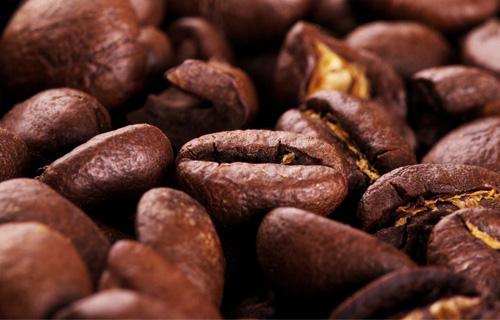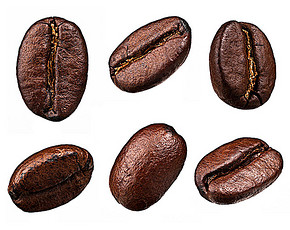Introduction of Peruvian coffee beans, planting and development in Peruvian coffee producing areas
Follow the caf é (Wechat official account vdailycom) and found that Beautiful Cafe opened a small shop of its own.
[PeruFTOSOLYCAFE]
[country]: Peru
[producing area]: Kahamaka
[altitude]: 1800-2000 m
[treatment]: washing
[variety]: Tibika, Kaddura, Bourbon, Kaduai
[producer]: sunshine Cooperative
[flavor]: nuts, caramel, cream
Peru's finest coffee is produced in Chanchmayo, Cuzco, Norte and Puno. It is most famous for the coffee beans produced in Chaximayo in the middle and Cusco in the south. Most Peruvian coffee is grown under natural conditions and produces characteristic organic coffee. Organic coffee is made of beans grown in the shade of trees. Coffee grown under natural conditions costs 10% more than others. Judging from poverty, farmers may not have the money to buy chemical fertilizers and pesticides, but it is really difficult to confirm all the coffee. Although the yield of coffee beans is not high because of the method of planting in the shade, its quality can reach the level of gourmet coffee. This is because shading trees can slow down the ripening of coffee trees, help coffee grow fully, make it contain more natural ingredients, breed better flavors, and reduce caffeine content.

Peruvian coffee market:
Peru has good economic conditions and a stable political situation, thus ensuring the good quality of coffee. In the mid-1970s, Peruvian coffee production was about 900000 bags a year, and then steadily increased to about 1.3 million bags a year. Although private exporters buy coffee in remote areas through middlemen, the main market is still monopolized by the government. Later, the private Peruvian Coffee exporters Association was established, which is committed to improving the quality of coffee, and its primary task is to set standards and eliminate inferior products, so as to create an atmosphere of quality supremacy. This positive move heralds a bright future for the coffee industry. Since then, rising prices have encouraged farmers to actively grow coffee rather than cocoa, the region's traditional cash crop.
In general, these coffee beans have the gloss of Central America, but they are all packaged in South American flavor. High-quality organic venues do have more rural coffee characteristics. As long as these coffee beans continue to add interesting flavors rather than weaken them. Such a cup of Peruvian coffee has all the bright and deep tastes. When a cup of ordinary Peruvian coffee is in your hand, you don't have to try to taste whether it is good or not.
Peruvian coffee is grown in a planned way, which has greatly increased coffee production. Its rich acidity and mellow smoothness are its most prominent features. Peruvian coffee has a soft sour taste, medium texture, good taste and aroma, and is an indispensable ingredient in the production of comprehensive coffee. High-quality Peruvian coffee, with strong aroma, smooth, layered, rich sweet, elegant and mild sour taste, will quietly awaken your taste buds.
Compared with high-quality organic Peruvian coffee, the difference between ordinary organic Peruvian coffee and high-quality organic Peruvian coffee is huge: relatively cheap beans are not only poor in quality, but often have obvious defects in the cup. Especially the grass flavor, overfermented flavor. It takes a lot of work to find good Peruvian coffee beans among a lot of middlemen or other people who can buy them. However, it also takes a lot of hard work to pick sample beans. But that must be better than working hard in piles of papers.
Important Notice :
前街咖啡 FrontStreet Coffee has moved to new addredd:
FrontStreet Coffee Address: 315,Donghua East Road,GuangZhou
Tel:020 38364473
- Prev

How about Peruvian maca coffee?
How about Peruvian maca coffee? Peruvian maca coffee is made from Peruvian maca extract, supplemented by Suoyang, and refined with high-quality Brazilian black coffee. It tastes mellow and full-bodied, completely restoring the single function of coffee. Peruvian Macca coffee allows you to taste the refreshing and aroma of Maca coffee while increasing the efficacy of anti-fatigue and immunity. Peruvian Macca coffee contains a variety of
- Next

Starbucks caramel macchiato method
Caramel macchiato is a drink made by adding espresso, vanilla and pure caramel to hot milk, blending three different flavors. Macchiato in Italian, meaning branding and dyeing. One of Starbucks' star drinks is sweet, silky and mellow. Caramel macchiato, also known as Sweet Honey, is an invention of Starbucks. The unique sweetness of caramel
Related
- Detailed explanation of Jadeite planting Land in Panamanian Jadeite Manor introduction to the grading system of Jadeite competitive bidding, Red bid, Green bid and Rose Summer
- Story of Coffee planting in Brenka region of Costa Rica Stonehenge Manor anaerobic heavy honey treatment of flavor mouth
- What's on the barrel of Blue Mountain Coffee beans?
- Can American coffee also pull flowers? How to use hot American style to pull out a good-looking pattern?
- Can you make a cold extract with coffee beans? What is the right proportion for cold-extracted coffee formula?
- Indonesian PWN Gold Mandrine Coffee Origin Features Flavor How to Chong? Mandolin coffee is American.
- A brief introduction to the flavor characteristics of Brazilian yellow bourbon coffee beans
- What is the effect of different water quality on the flavor of cold-extracted coffee? What kind of water is best for brewing coffee?
- Why do you think of Rose Summer whenever you mention Panamanian coffee?
- Introduction to the characteristics of authentic blue mountain coffee bean producing areas? What is the CIB Coffee Authority in Jamaica?

